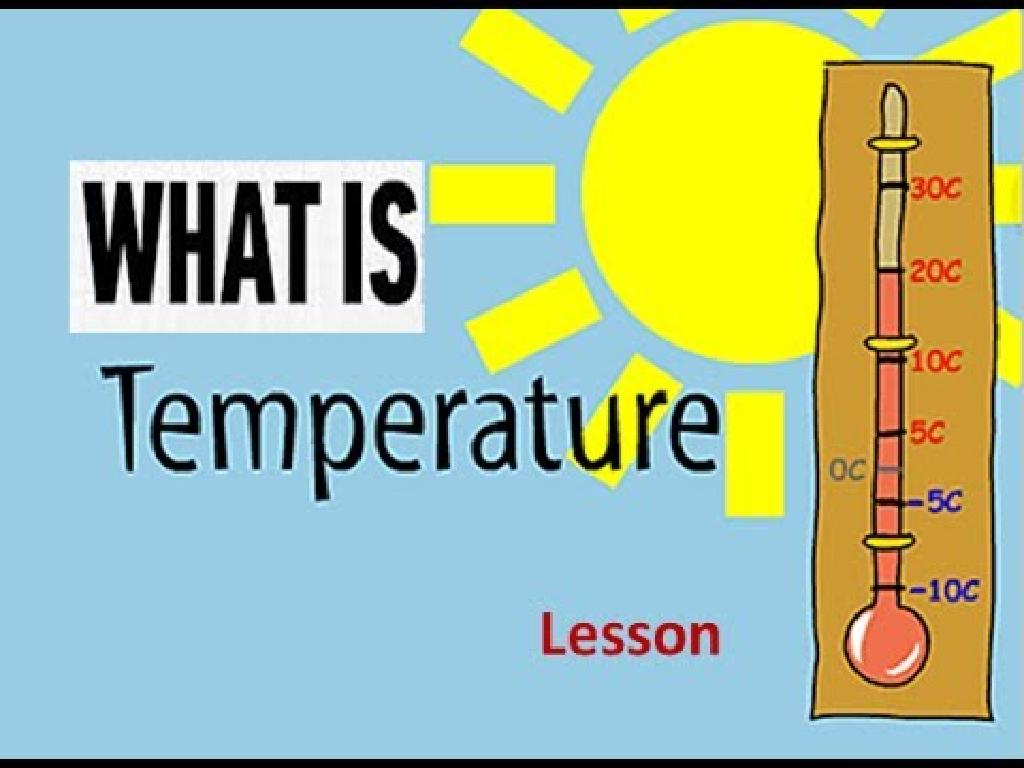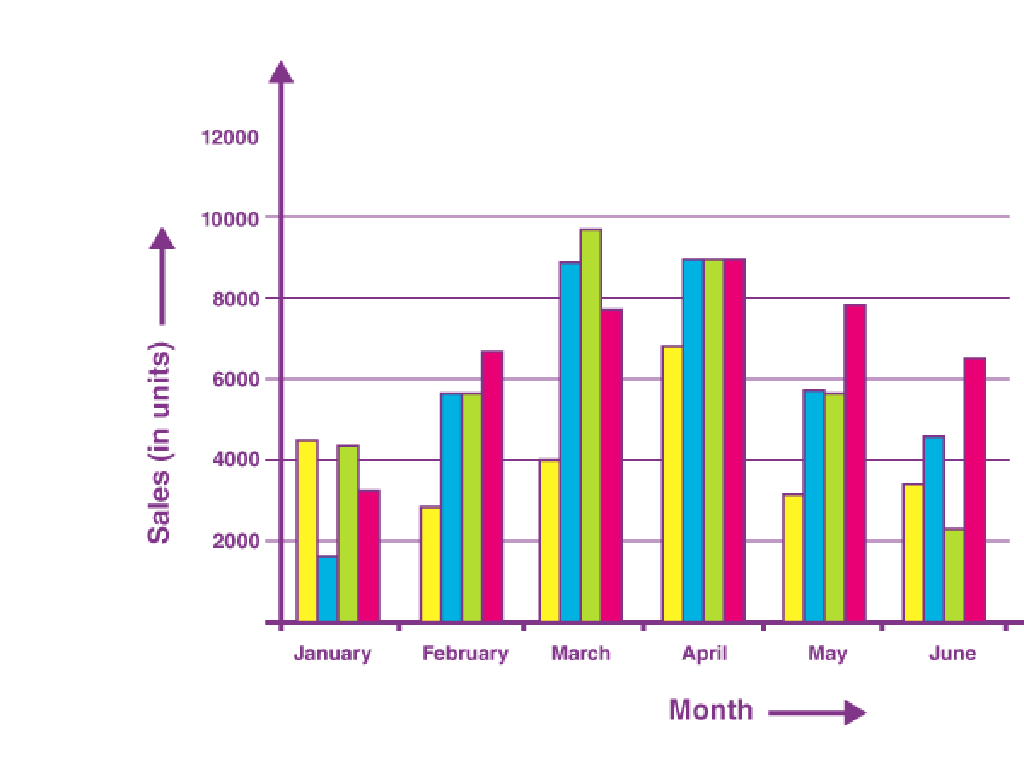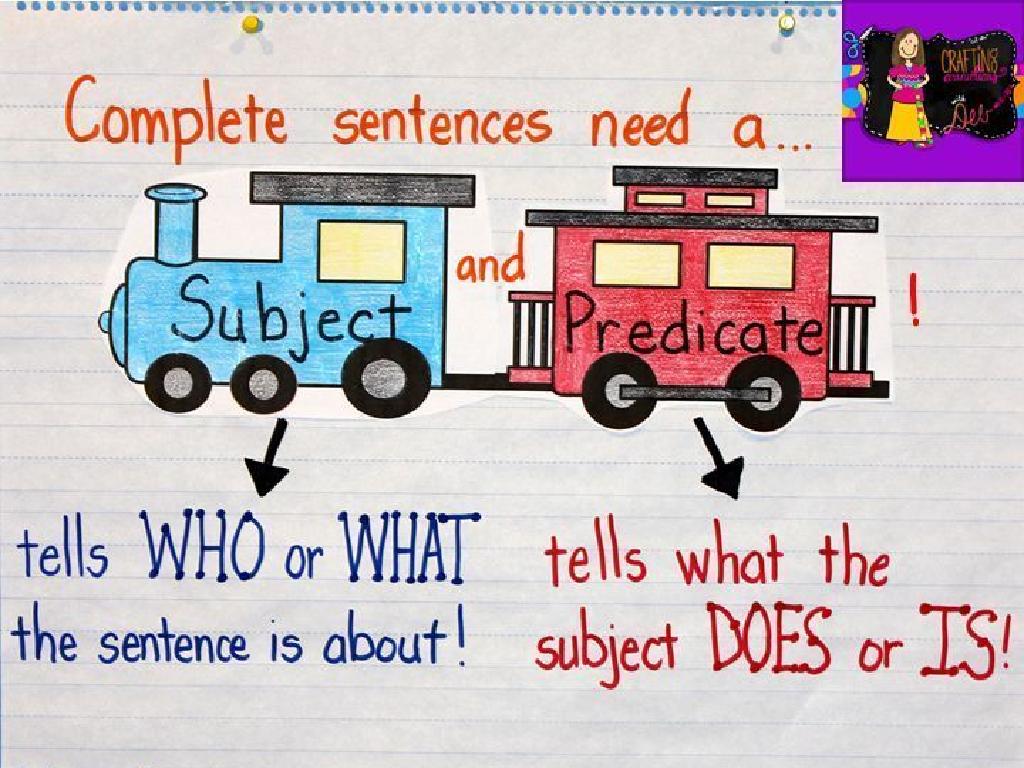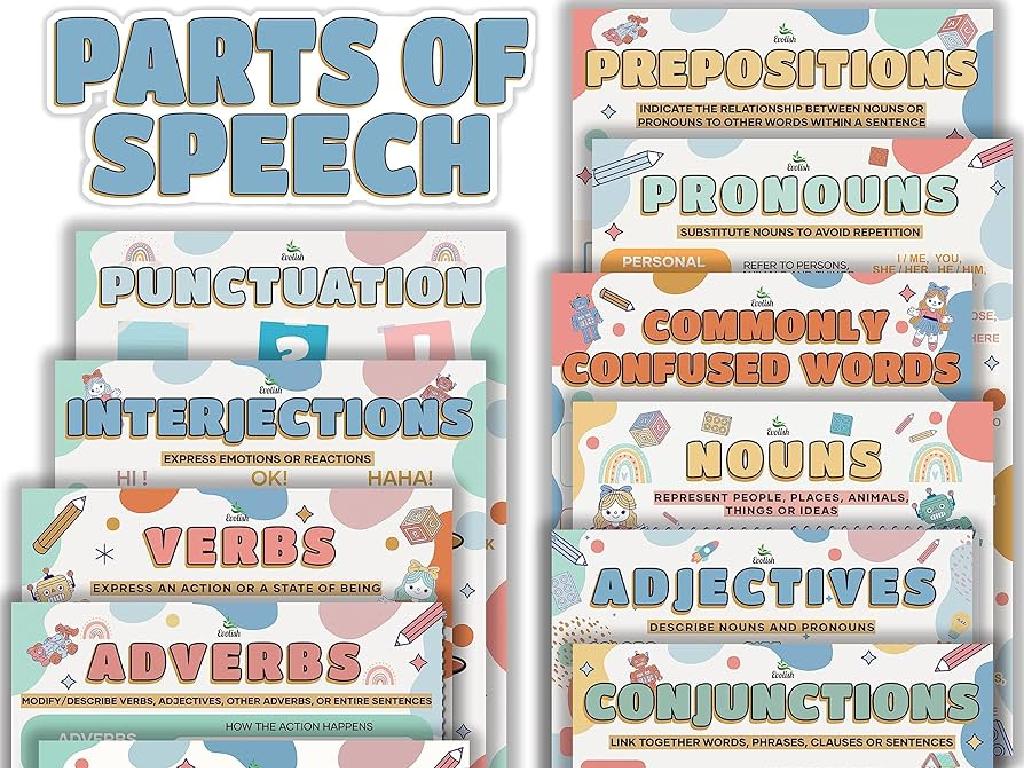Add And Subtract Fractions With Like Denominators
Subject: Math
Grade: Sixth grade
Topic: Add And Subtract Fractions
Please LOG IN to download the presentation. Access is available to registered users only.
View More Content
Adding & Subtracting Fractions with Like Denominators
– Fractions represent parts of a whole
– Imagine a pizza cut into equal slices; each slice is a fraction of the pizza
– Like denominators: same bottom number
– Denominators indicate how many equal parts the whole is divided into
– Adding fractions with like denominators
– Simply add the numerators and keep the denominator the same
– Subtracting fractions with like denominators
– Subtract the numerators and keep the denominator the same
|
Begin with a basic understanding of fractions as parts of a whole, using tangible examples like slices of pizza to illustrate the concept. Emphasize that ‘like denominators’ means the fractions have the same number of parts. When adding or subtracting fractions with like denominators, the process is straightforward: keep the denominator the same and perform the operation on the numerators. Provide examples for both adding and subtracting to solidify the concept. Encourage students to visualize the fractions to better understand how the parts combine or separate. This lesson will build a foundation for working with more complex fractions in the future.
Understanding Fractions
– Fraction: part of a whole
– A slice of pizza out of a whole pizza
– Numerator and denominator
– Top number (slices you eat) / Bottom number (total slices)
– Denominator: equal parts
– If a pizza is cut into 8 pieces, the denominator is 8
– Numerator: parts we have
– If you eat 3 pieces, the numerator is 3
|
Begin by explaining that a fraction represents a part of a whole, like a slice of pizza out of an entire pizza. Clarify that the numerator, the top number, indicates how many parts we are considering, while the denominator, the bottom number, shows into how many equal parts the whole is divided. Use visual aids like pie charts or pizza slices to help students visualize fractions. Emphasize that in fractions with like denominators, the whole is divided into the same number of parts, making it easier to add and subtract because we are working with the same size pieces.
Adding and Subtracting Fractions with Like Denominators
– Understanding like denominators
– Denominators are the same in like fractions, e.g., 1/4 and 3/4
– Significance of same-sized parts
– Fractions represent equal parts of a whole, ensuring comparability
– Simplifying addition and subtraction
– Add/subtract numerators directly, keep the common denominator
– Consistent pieces make it easier
|
This slide introduces the concept of like denominators, which is crucial for adding and subtracting fractions effectively. Emphasize that like denominators mean the fractions are parts of the same whole, divided equally. This makes operations simpler because only the numerators change students just add or subtract the top numbers while the bottom number, the denominator, remains the same. Use examples such as slices of the same pizza to illustrate the concept. Encourage students to practice with different fractions having like denominators to build confidence.
Adding Fractions with Like Denominators
– Keep the denominator same
– Add the numerators together
– Simplify the fraction if needed
– If the numerator is larger than the denominator, turn it into a mixed number.
– Example: Adding 1/4 and 2/4
– 1/4 + 2/4 equals (1+2)/4, which simplifies to 3/4
|
When adding fractions with the same denominator, the process is straightforward. Students should be reminded that the denominator represents the total number of equal parts, and since we are working with the same type of parts, the denominator remains unchanged. The focus is on combining the numerators, which represent the number of parts we have. After adding the numerators, students should check if the fraction can be simplified or if it can be converted into a mixed number when the numerator is greater than the denominator. The example provided should be worked through step-by-step to ensure understanding. Encourage students to practice with additional examples and to always simplify their answers.
Subtracting Fractions with Like Denominators
– Keep the denominator same
– Subtract the top numbers
– If you have 3/4 – 1/4, just subtract 1 from 3
– Simplify the fraction if needed
– 2/4 can be simplified to 1/2 for easier understanding
– Practice with examples
– Try 5/6 – 2/6 and simplify your answer
|
When subtracting fractions with the same denominator, remind students that the denominator represents the total number of equal parts and stays the same. They only need to subtract the numerators (the top numbers). After finding the difference, they should check if the fraction can be simplified by finding the greatest common factor. Simplifying makes the fraction easier to understand and work with. Encourage students to practice with several examples to become comfortable with the process. During class, work through problems together and discuss why the denominator remains unchanged.
Simplifying Fractions
– Understanding fraction reduction
– Making fractions simpler by reducing
– Divide numerator & denominator
– Use the same number for both parts
– Simplify 2/4 to 1/2 example
– Both 2 and 4 are divisible by 2
– Practice with different fractions
|
This slide introduces the concept of simplifying fractions, which is a fundamental skill in working with fractions. Simplifying, or reducing, fractions makes them easier to work with and understand. To simplify a fraction, students should find a common factor of the numerator and the denominator and divide both by that number. For example, in the fraction 2/4, both 2 and 4 can be divided by 2 to get the simplified fraction 1/2. Encourage students to practice this skill by finding fractions in their homework that can be simplified and to always look for the greatest common factor to reduce the fraction to its simplest form. This will prepare them for adding and subtracting fractions with like denominators, as working with simpler fractions can make the process more straightforward.
Adding and Subtracting Fractions Practice
– Add fractions with like denominators
– Subtract fractions with like denominators
– Example: 2/5 + 1/5
– Combining 2 parts out of 5 with another 1 part out of 5
– Example: 4/6 – 1/6
– Taking away 1 part out of 6 from 4 parts out of 6
|
This slide is aimed at providing students with practice problems to reinforce their understanding of adding and subtracting fractions with like denominators. Start by explaining that when the denominators are the same, you simply add or subtract the numerators. For the addition example, show that 2/5 plus 1/5 equals 3/5 because you add the numerators (2+1) and keep the denominator (5). For the subtraction example, demonstrate that 4/6 minus 1/6 equals 3/6 because you subtract the numerators (4-1) and keep the denominator (6). After explaining, work through the problems as a class. Encourage students to solve these problems on their own, and then discuss the answers as a group. This will help solidify the concept and ensure that students are comfortable with the process.
Class Activity: Fraction Stations
– Break into small groups
– Each group gets unique problems
– Groups tackle different sets of addition and subtraction problems with like denominators
– Use fraction strips for solving
– Visual aids help understand fractions better
– Present solutions to the class
|
This interactive class activity is designed to encourage collaborative learning and hands-on experience with fractions. Divide the class into small groups, ensuring a mix of abilities in each to promote peer learning. Provide each group with a set of fraction addition and subtraction problems that have like denominators. Encourage the use of fraction strips, which are a great visual tool to help students better understand the concept of adding and subtracting parts of a whole. After solving the problems, each group will present their solutions and methods to the class, fostering communication skills and reinforcing their understanding of the topic. Possible variations for different groups could include using different denominators, applying the fractions to real-life scenarios, or challenging them with mixed numbers.
Wrapping Up: Fractions Homework
– Excellent work with fractions today!
– Homework: Finish the fractions worksheet
– Focus on adding and subtracting fractions that have the same denominator
– Simplify fractions in your answers
– Reduce fractions to their simplest form
– Practice makes perfect!
|
Today’s lesson on adding and subtracting fractions with like denominators was a success. For homework, students are assigned a worksheet that reinforces what they’ve learned in class. Remind them of the importance of simplifying their answers, which means finding the smallest numerator and denominator that represent the same fraction. This practice will help solidify their understanding and improve their skills in working with fractions. Encourage them to take their time with each problem and to check their work for accuracy. In the next class, we can review any challenging problems and celebrate their efforts!






